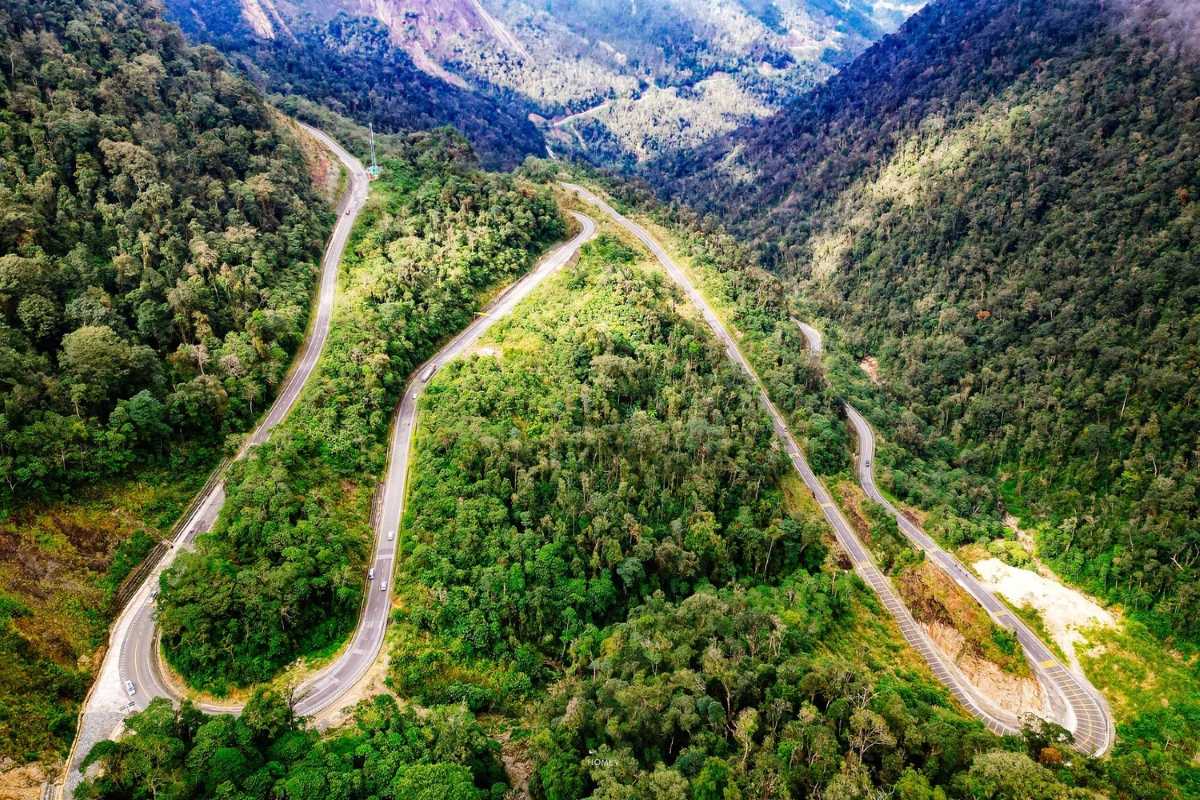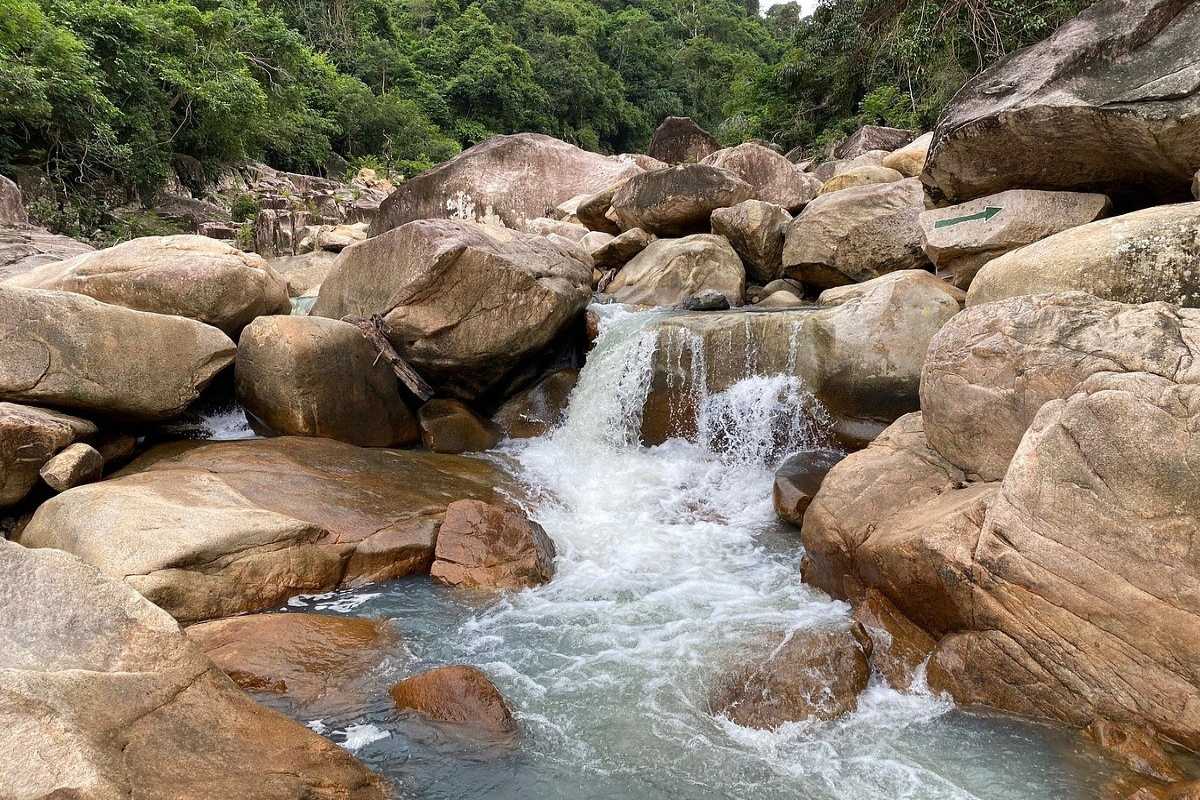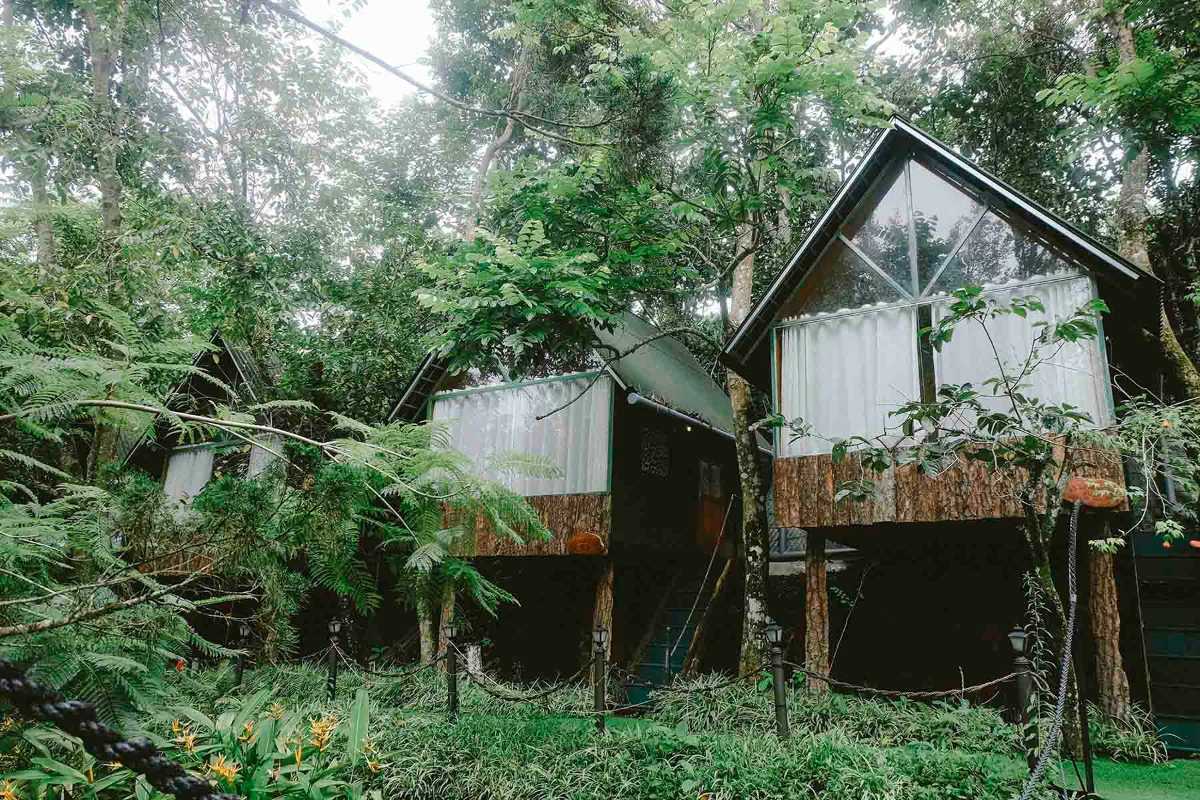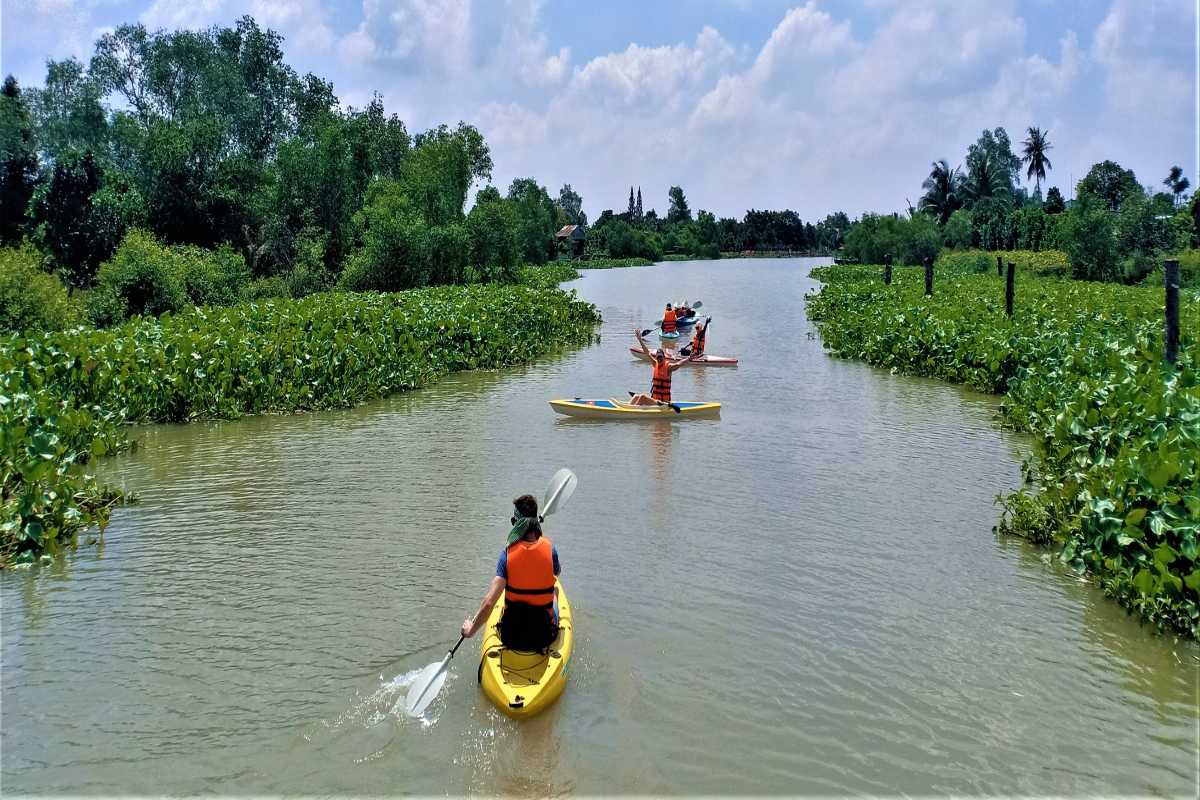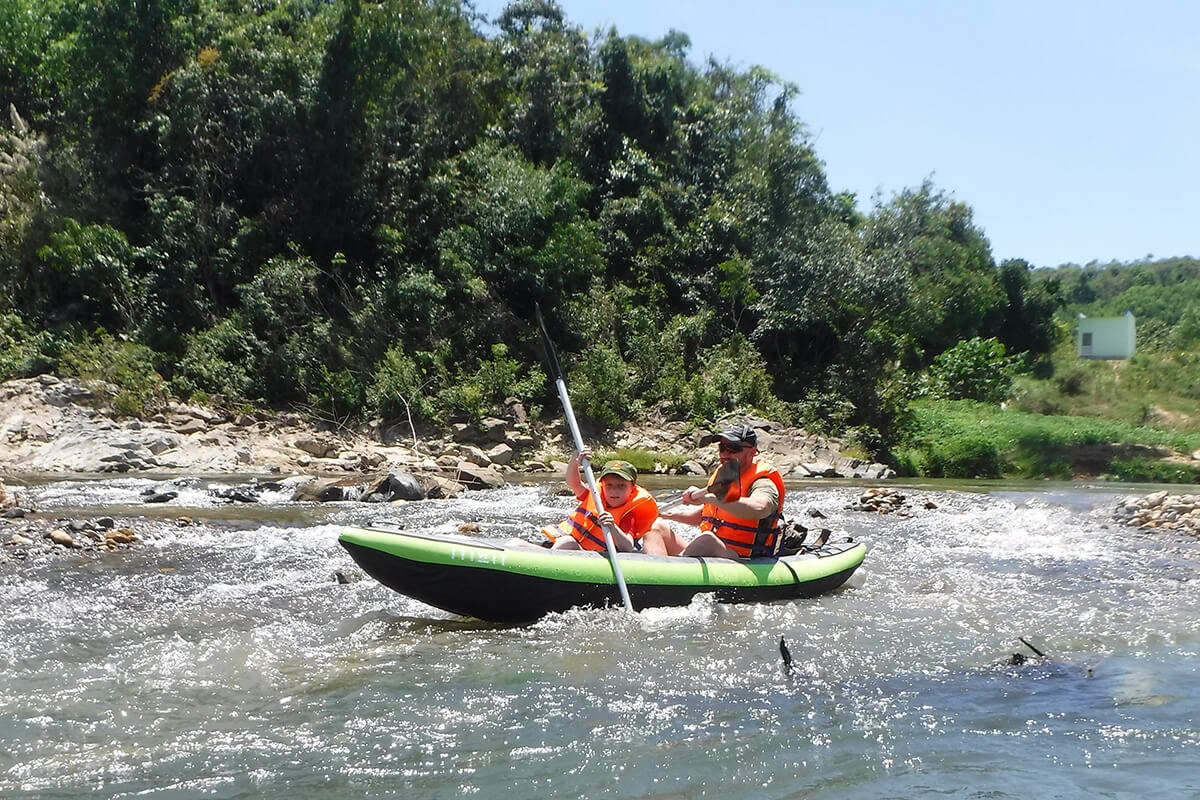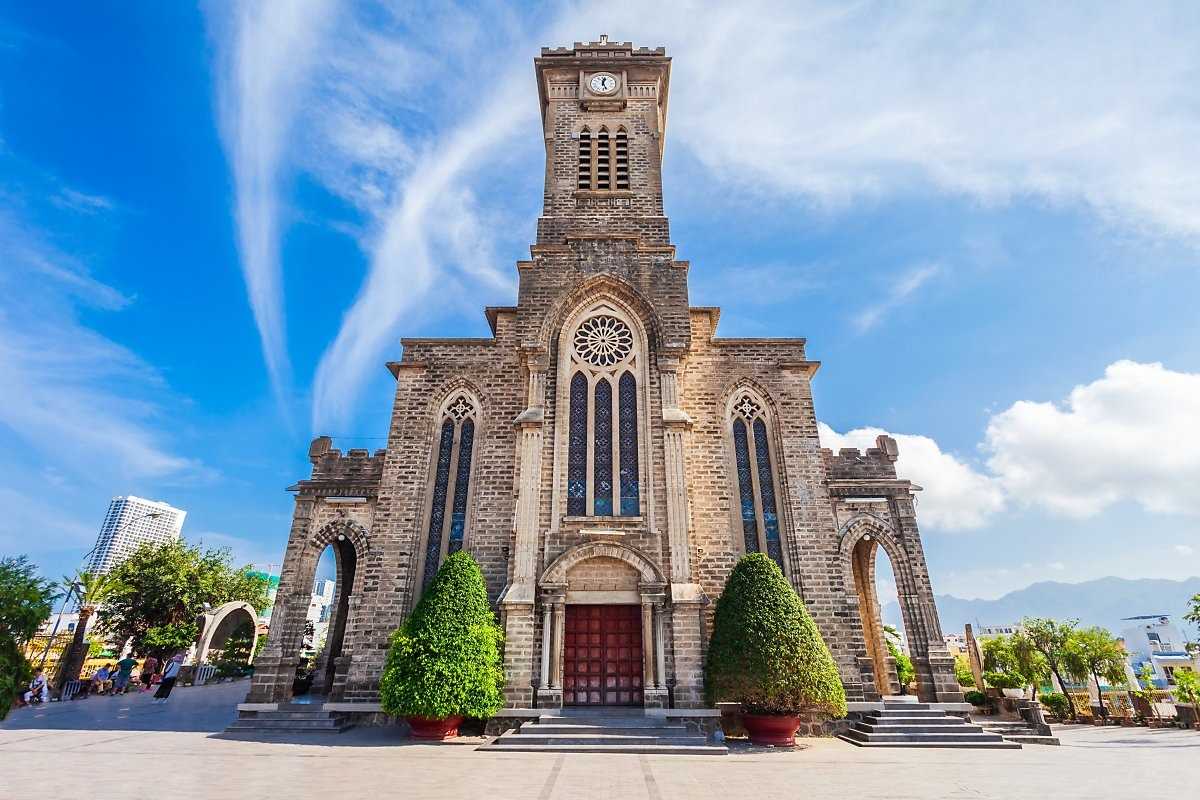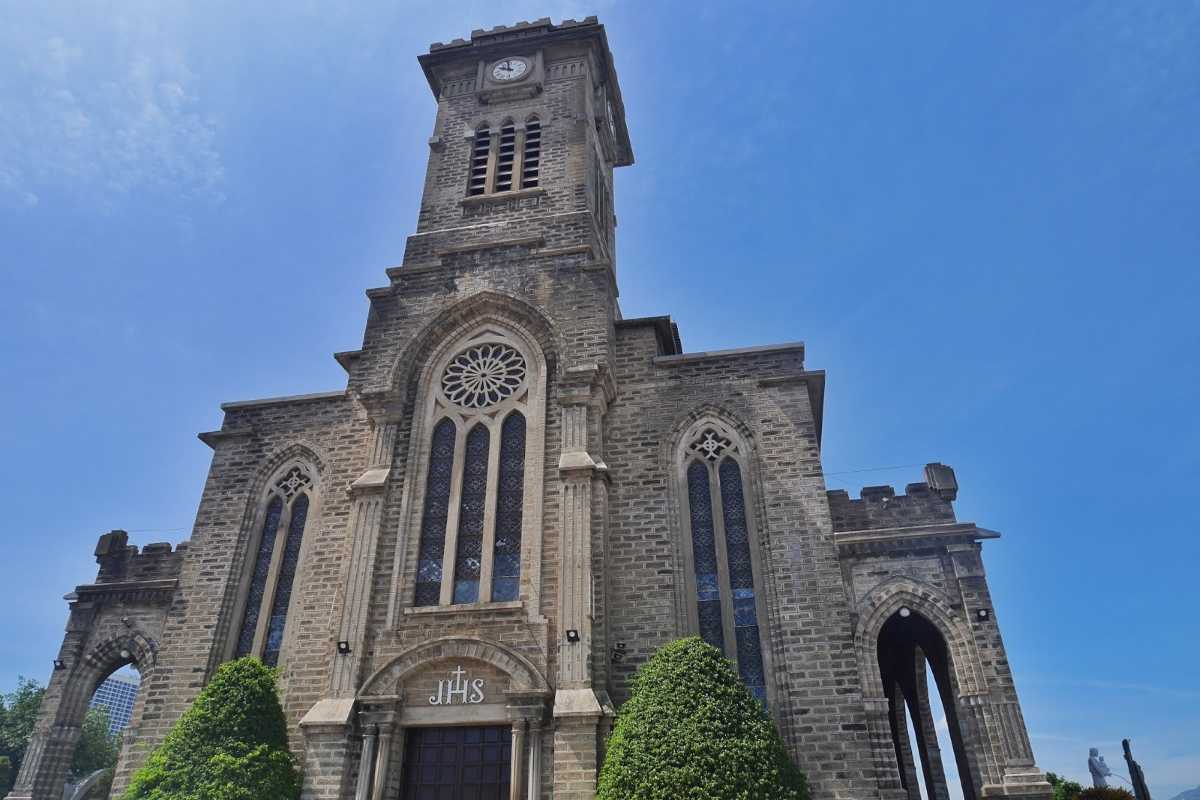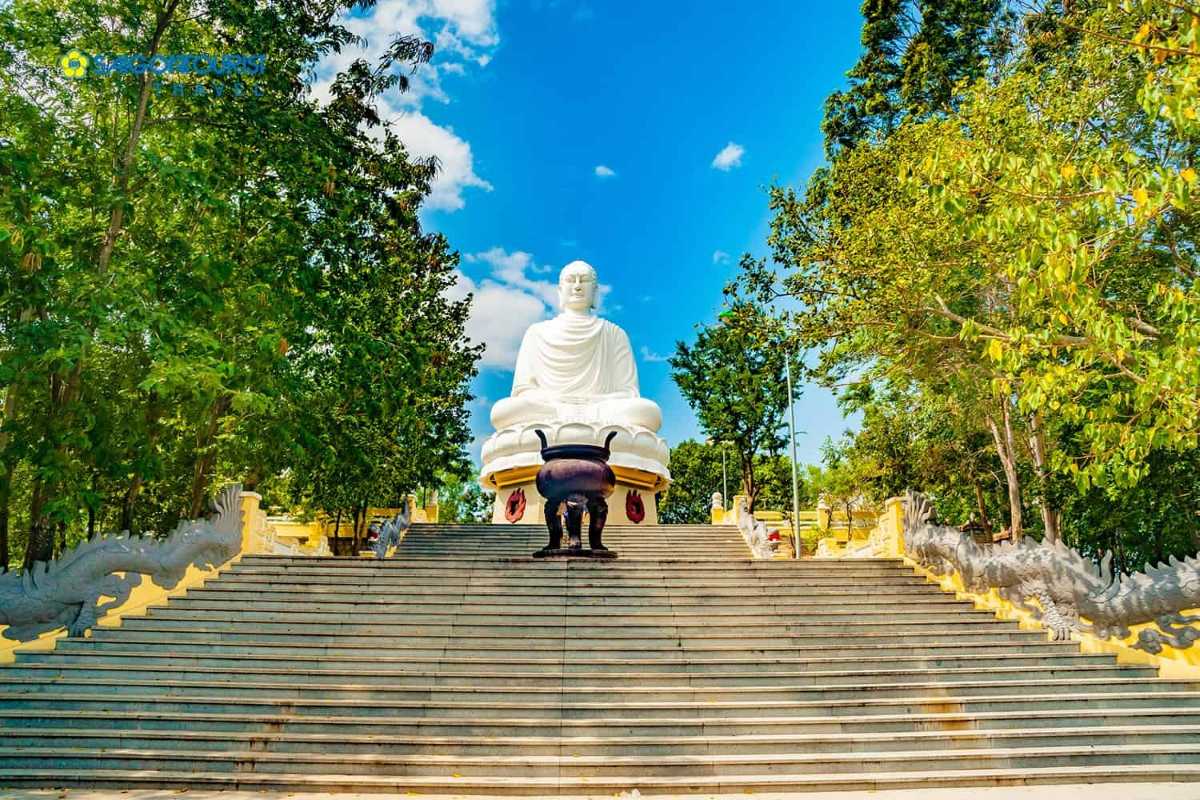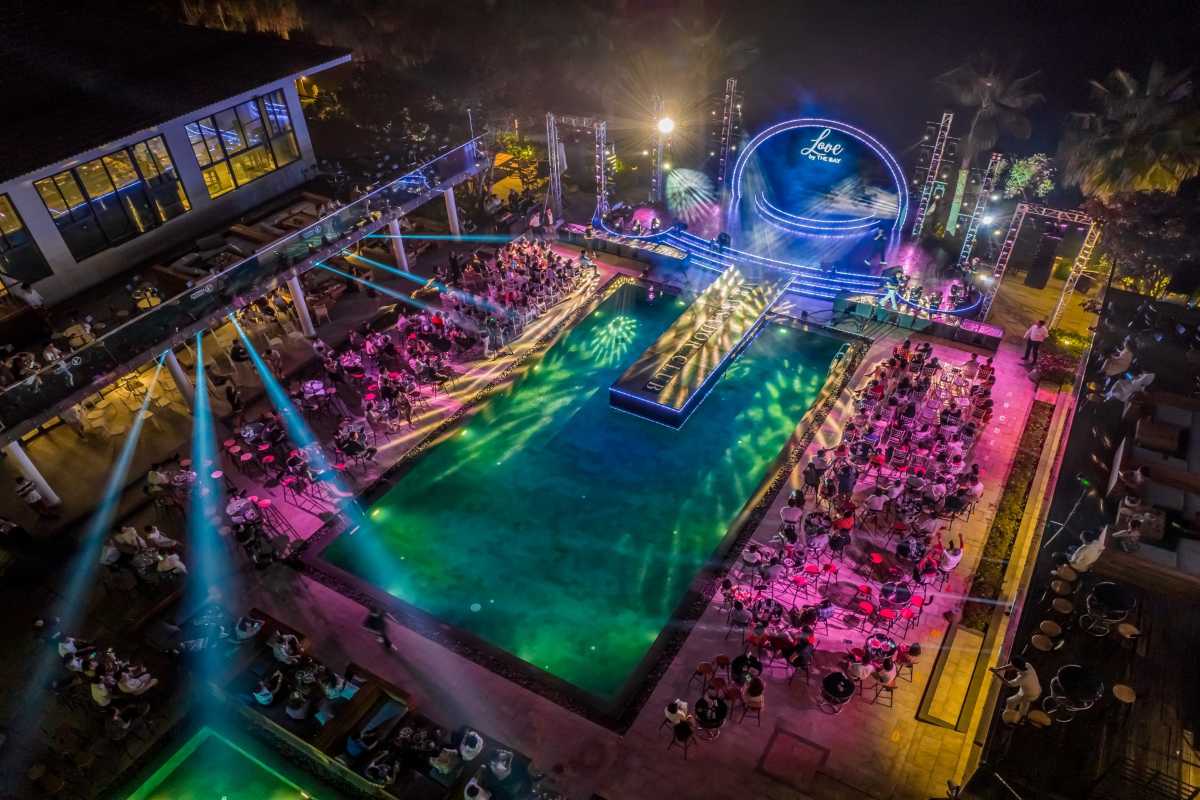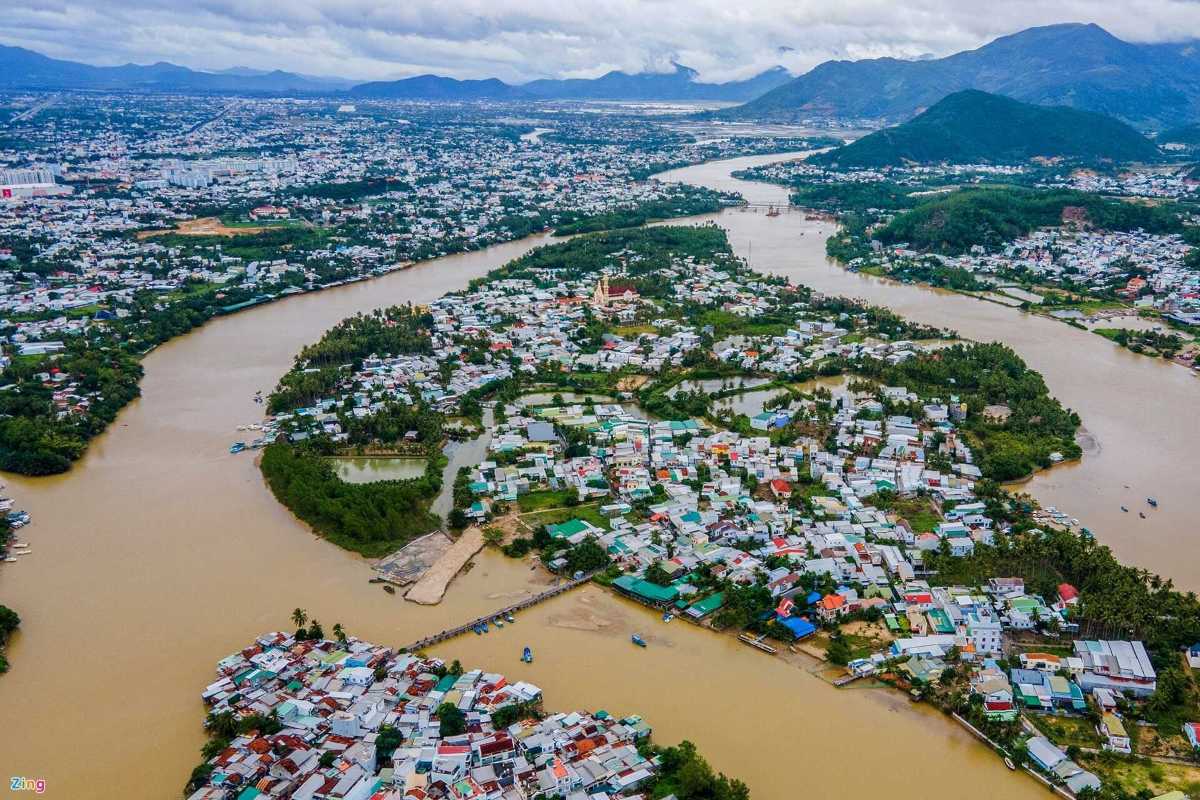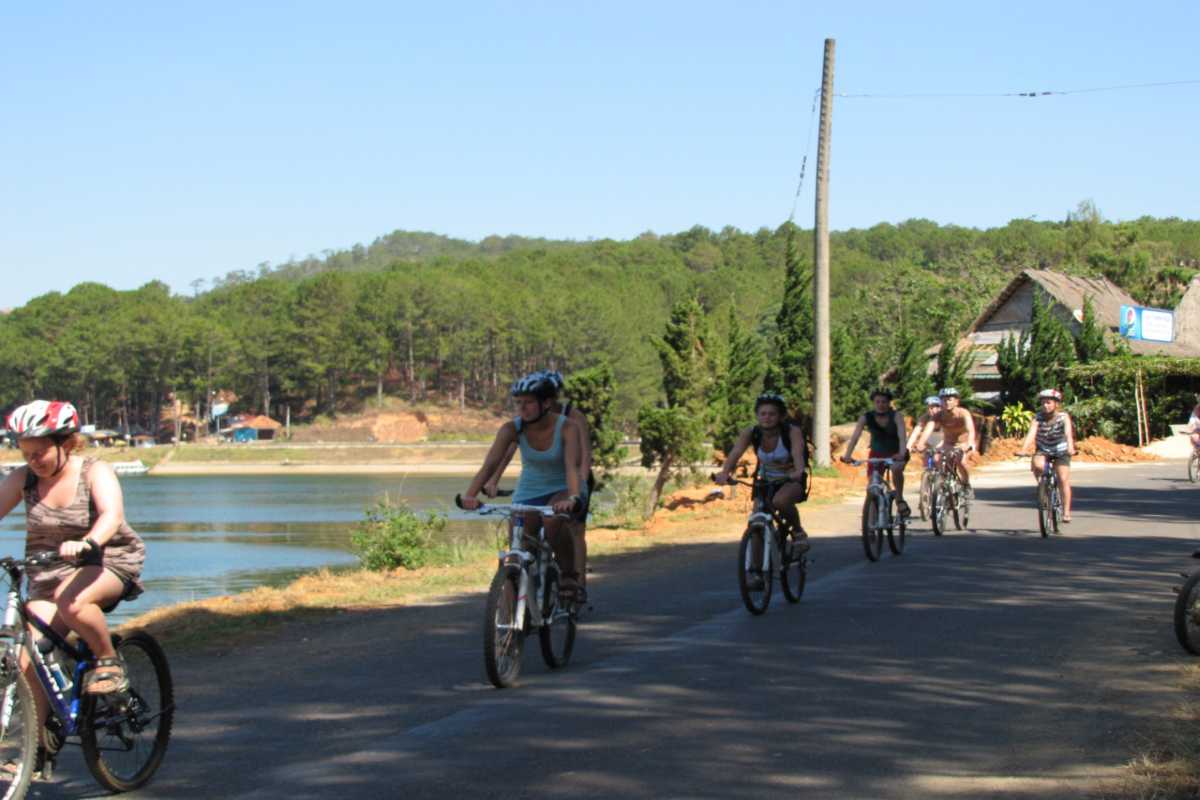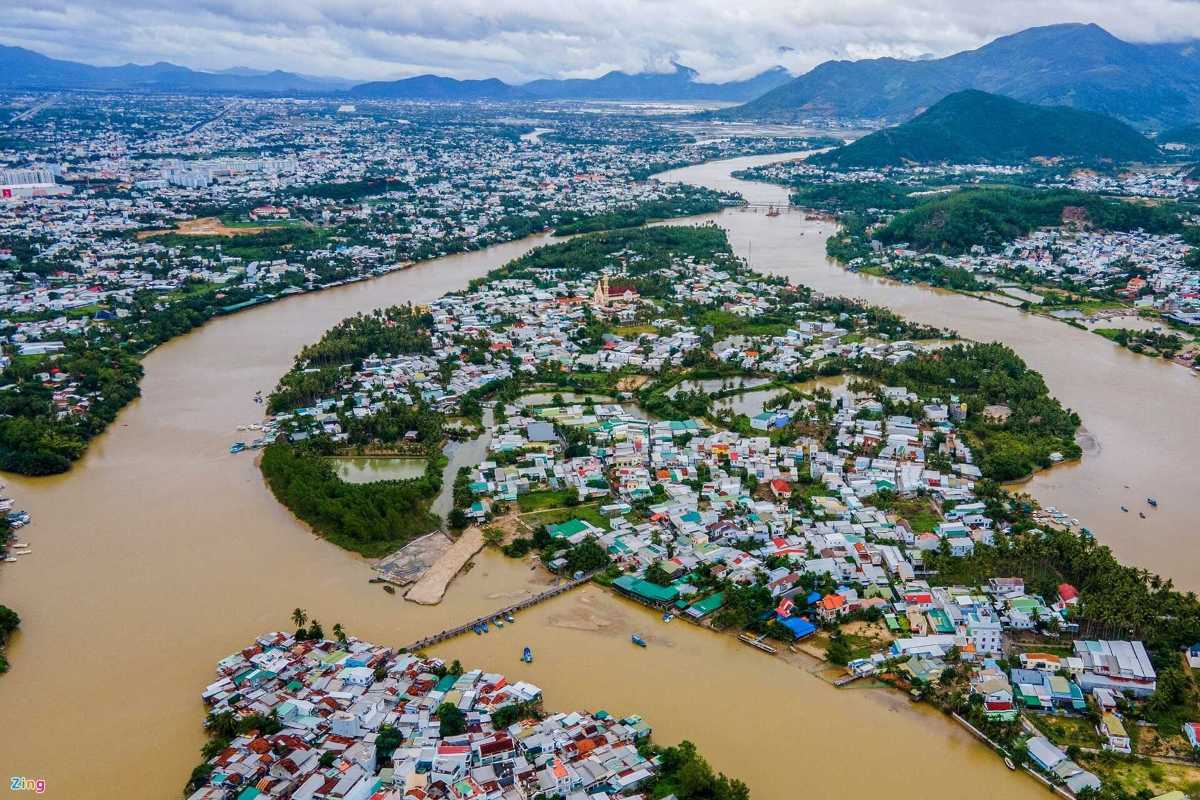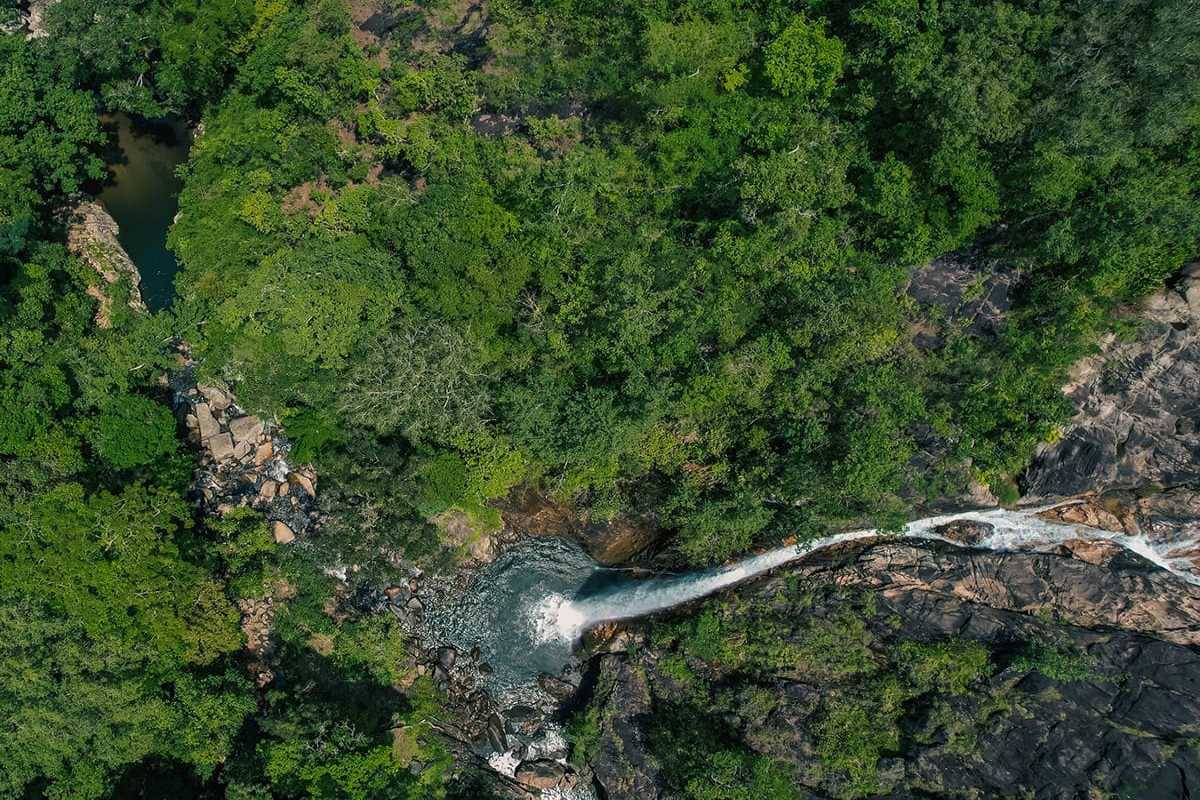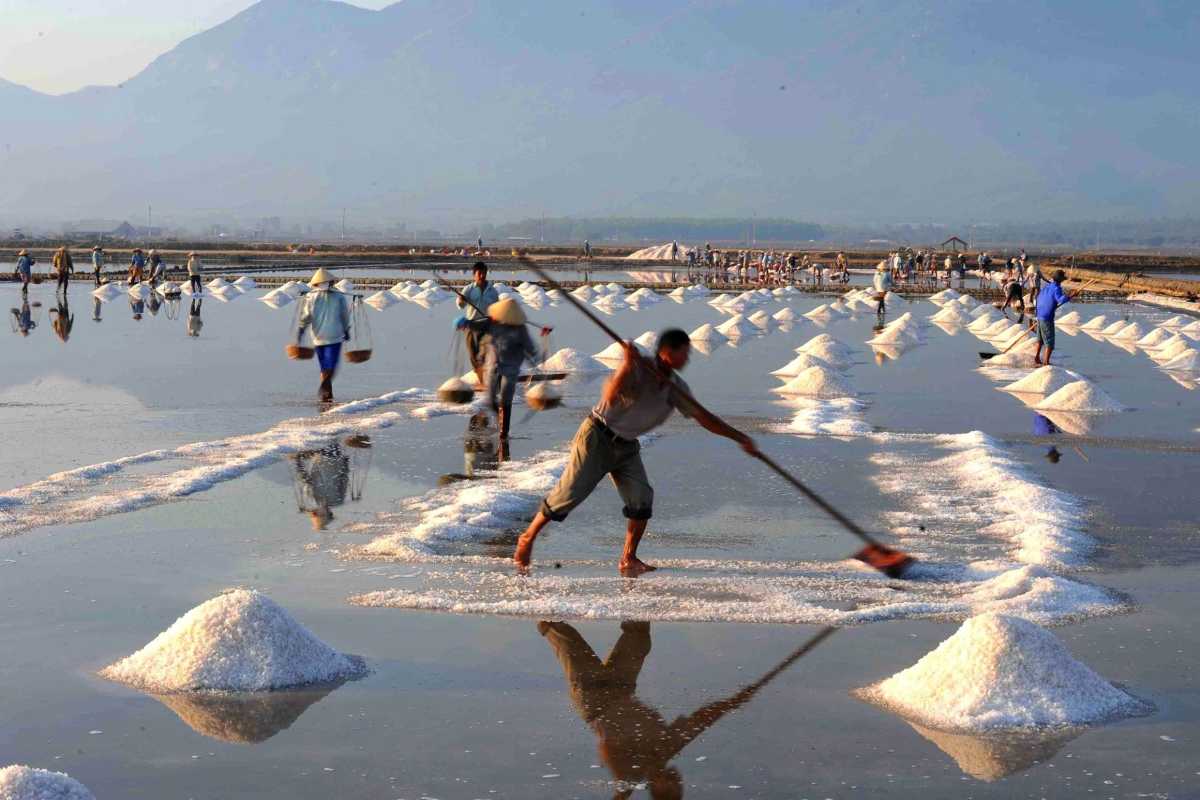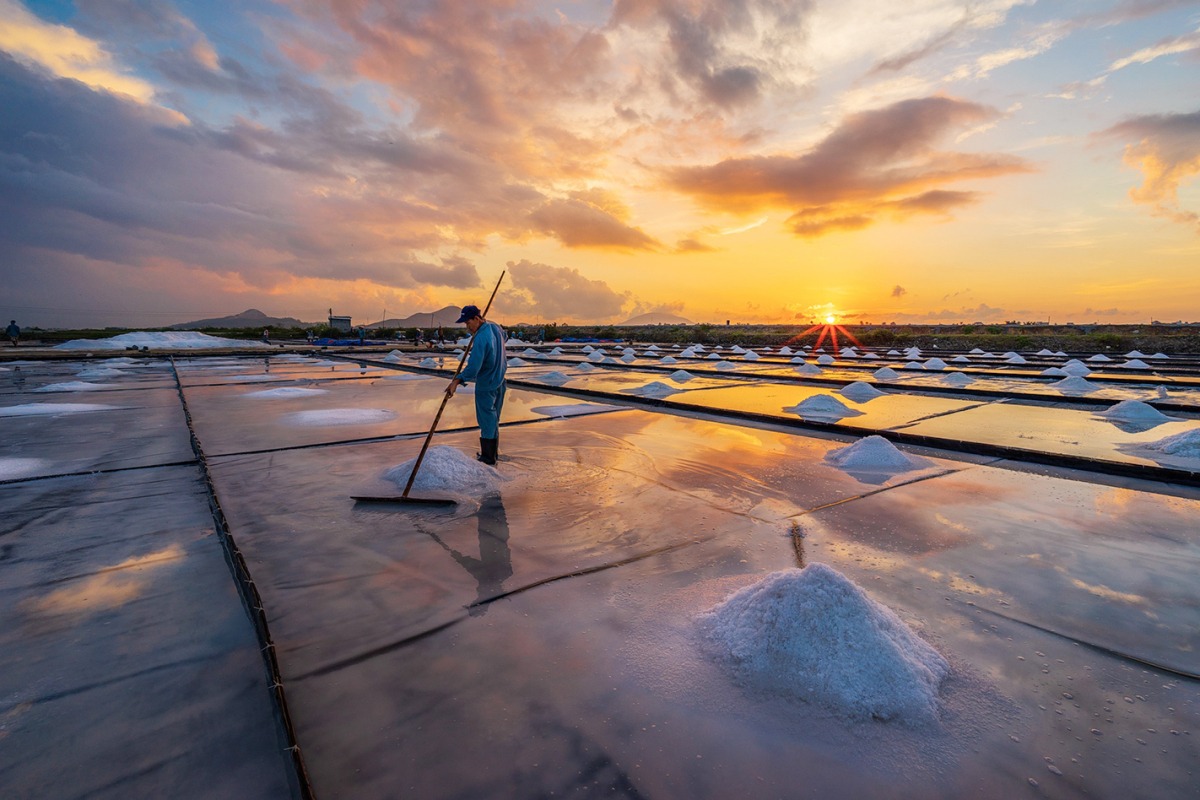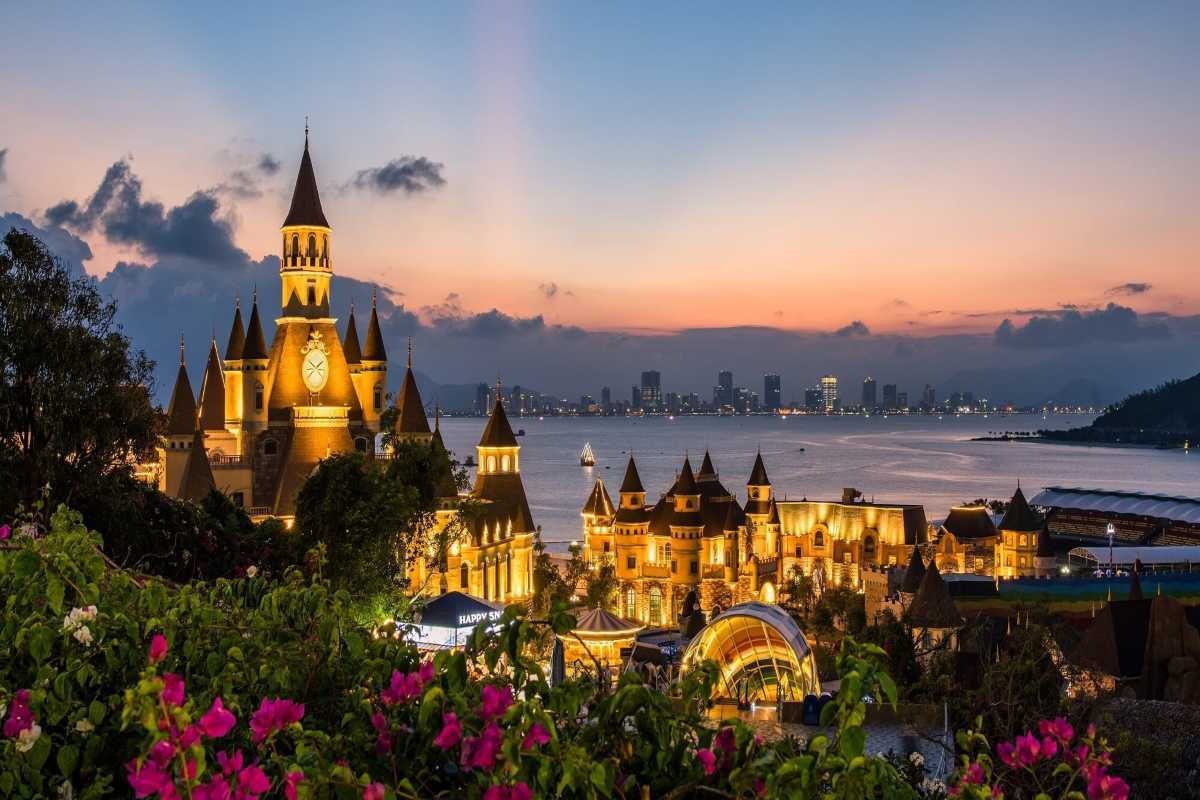Tong Lam Lo Son Pagoda Travel Guide: History & Visiting Tips
June 30, 2025 Culture
Tong Lam Lo Son Pagoda offers a serene cultural and spiritual experience in Khanh Hoa, showcasing traditional Vietnamese Buddhist architecture and active meditation sessions. Visitors can explore its unique stone construction, participate in local festivals, and enjoy peaceful surroundings rich in religious heritage.
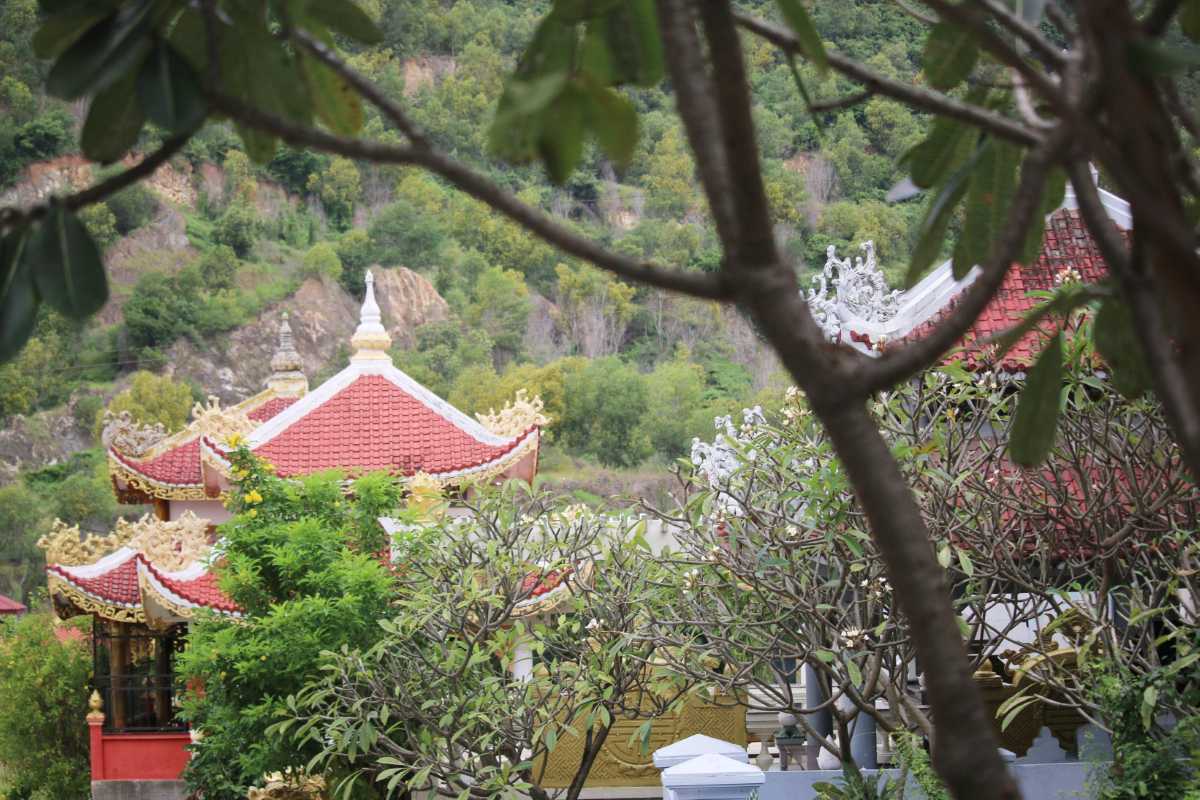
Introduction to Tong Lam Lo Son Pagoda
Tong Lam Lo Son Pagoda is a significant cultural and spiritual site located in Vinh Phuong Commune, Dien Khanh District, near Nha Trang. It represents an important part of Vietnamese Zen Buddhism and offers visitors a deep connection to the country’s rich cultural heritage. This introduction will help you understand why the pagoda is a must-visit destination for those interested in Buddhist traditions and spiritual tourism. Plan your visit to Tong Lam Lo Son Pagoda to experience its unique charm and peaceful environment.

Overview of the Pagoda
The Tong Lam Lo Son Pagoda stands out for its distinct architecture and spiritual significance. It features traditional Vietnamese Buddhist temple designs combined with unique stone construction, often referred to as “Chùa Đá Lố.” The pagoda serves as a center for meditation and religious practices, welcoming those seeking tranquility and cultural insight. Understanding its design and purpose will enrich your visit and appreciation of its role in Vietnamese spirituality.

Location and Accessibility
Situated in Vinh Phuong Commune of Dien Khanh District, the pagoda is accessible from Nha Trang and nearby areas by various transport options. Visitors can travel by car, taxi, motorbike, or public transport, making it convenient for both locals and tourists to reach this spiritual site. Knowing how to get there will help you plan your trip effectively and enjoy your experience without hassle.
Geographic setting in Vinh Phuong Commune, Dien Khanh District
This section explains the precise rural location of Tong Lam Lo Son Pagoda, helping you visualize its peaceful surroundings and plan your visit accordingly. Understanding the geographic context provides insight into the serene environment that enhances the spiritual experience.
- Vinh Phuong Commune: A quiet rural area known for its natural beauty and traditional Vietnamese countryside lifestyle.
- Dien Khanh District: An administrative region near Nha Trang, blending cultural heritage with natural landscapes.
- Surrounding environment: Rolling hills and green fields that create a tranquil setting for the pagoda.
- Accessibility: Located off main roads but reachable through well-marked local routes.
These geographic features contribute to the pagoda’s calming atmosphere, making it an ideal place for spiritual reflection and cultural exploration.
Transportation options from Nha Trang and nearby areas
To ensure a smooth journey to Tong Lam Lo Son Pagoda, it is important to know your available transportation choices. This section covers various travel methods from Nha Trang and nearby points to help you select the best option for your trip.
- Car and Taxi Services: Offer convenient and direct travel from Nha Trang city center and Cam Ranh International Airport.
- Motorbike Rental: Popular among travelers seeking flexibility and adventure when exploring rural areas.
- Public Bus Routes: Cost-effective option connecting urban centers with surrounding communes including Dien Khanh.
- Private Transfers: Available via travel agencies or local operators, providing hassle-free door-to-door service.
Choosing the right transportation mode ensures you arrive comfortably and on time, ready to experience the spiritual tranquility of Tong Lam Lo Son Pagoda.
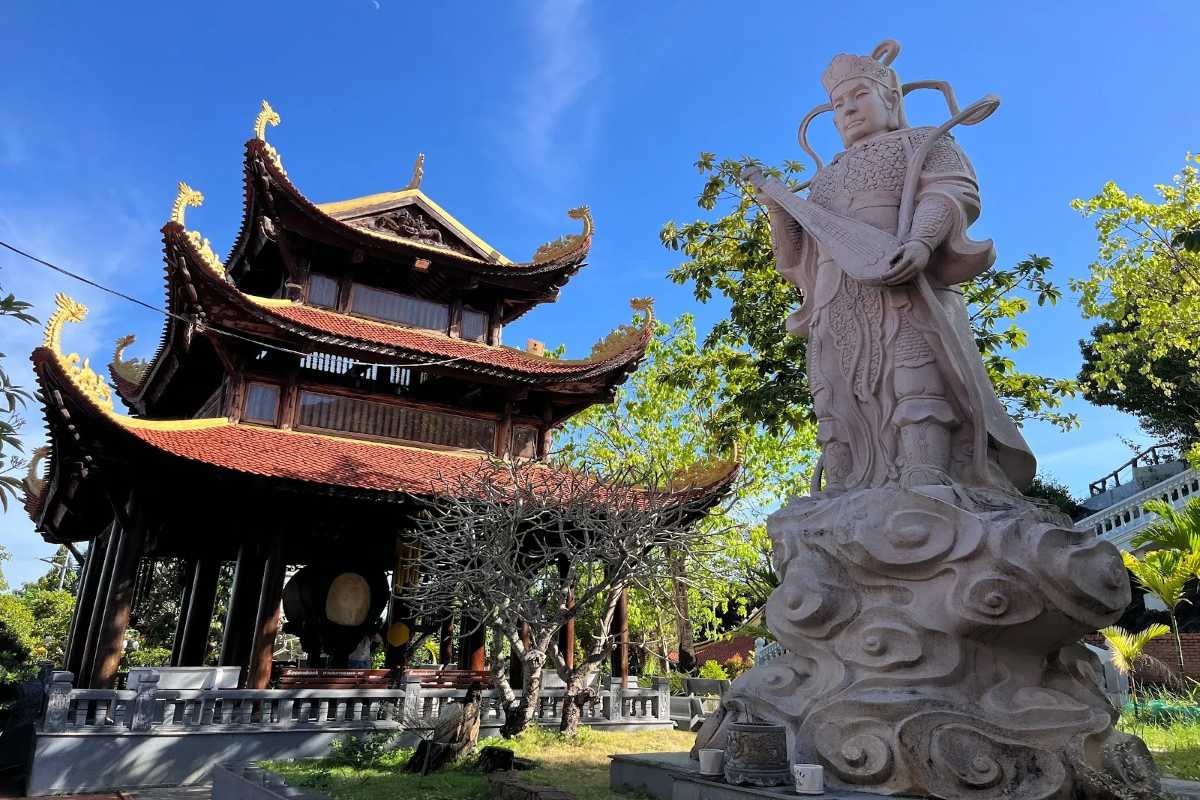
Significance in Vietnamese Buddhism
The pagoda plays a vital role in the practice and preservation of Vietnamese Buddhism, especially within the Zen tradition. It is a center for rituals, meditation, and cultural education, reflecting deep spiritual values and centuries-old Buddhist customs. Appreciating the pagoda’s religious importance helps visitors connect more meaningfully with its cultural heritage and ongoing practices.
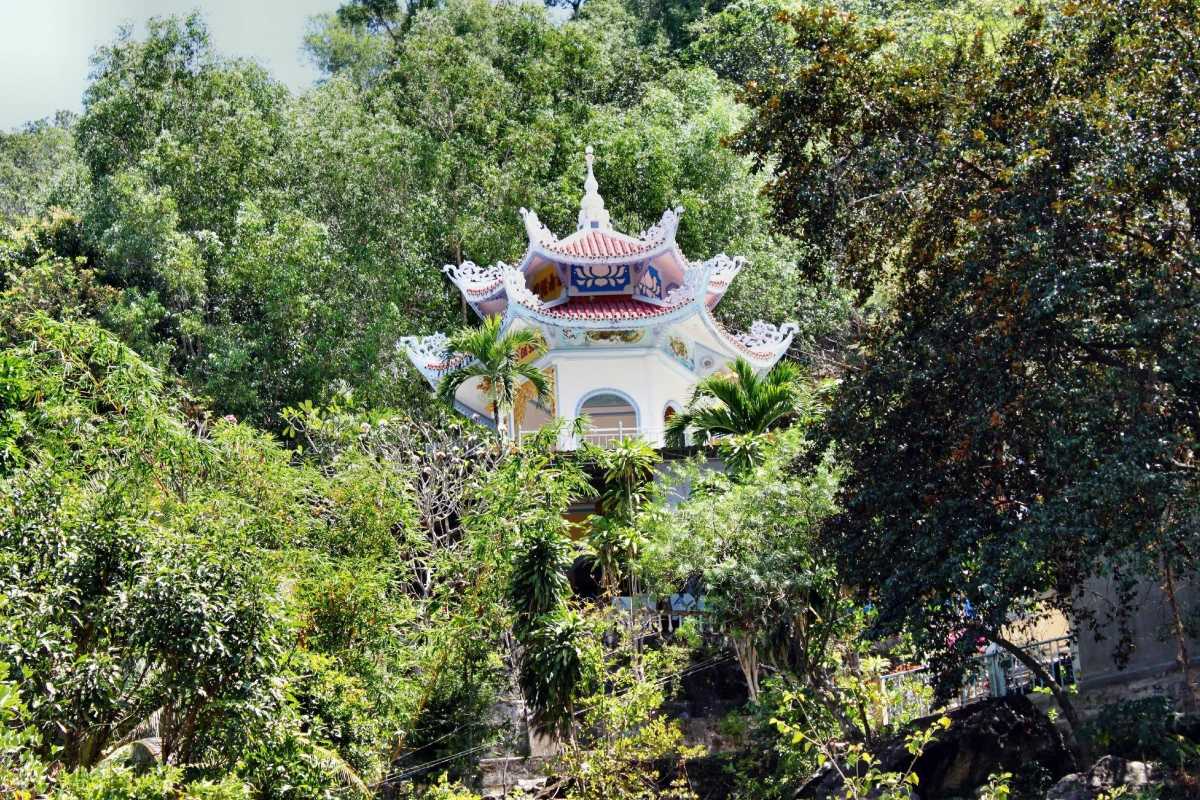
Historical Background
The Tong Lam Lo Son Pagoda holds a rich history that intertwines with the spiritual and cultural fabric of Vietnam. Understanding its origins, architectural uniqueness, and role in the local community offers deeper appreciation for this important site. This section will guide you through the pagoda’s historical development and cultural significance.
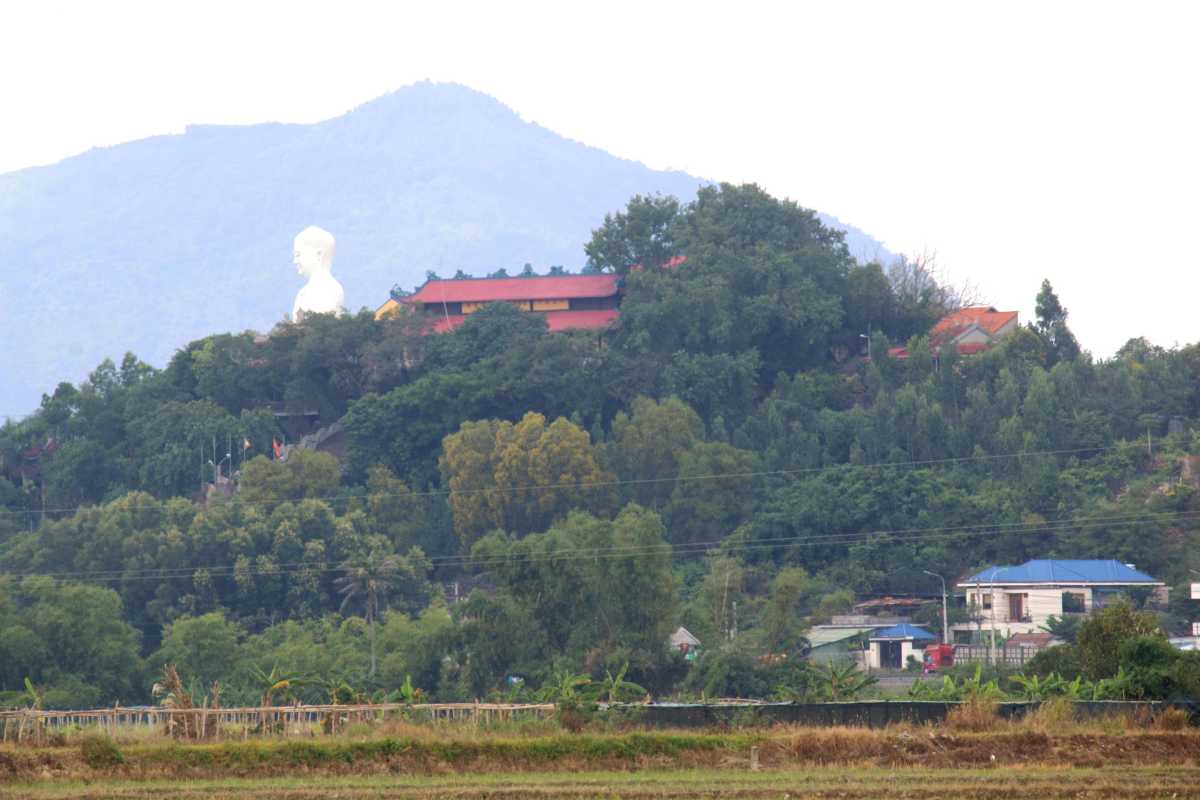
Origins and Founding of Tong Lam Lo Son Pagoda
The foundation of Tong Lam Lo Son Pagoda is deeply rooted in the Tong Lam Zen Buddhist tradition. This tradition represents a renewal movement within Vietnamese Buddhism, emphasizing meditation and spiritual discipline. Exploring the pagoda’s origins provides insight into its spiritual mission and its place within the broader Buddhist community.
Connection to the Tong Lam Zen Buddhist tradition
This part explains the pagoda’s affiliation with the Tong Lam Zen Buddhist tradition, which revitalized meditation practices in Vietnam. The tradition emphasizes mindfulness, simplicity, and a return to classical Zen principles, making the pagoda a center for both practice and teaching.
- Spiritual renewal: The tradition marked a revival of Zen Buddhism in modern Vietnam.
- Meditation focus: Central to the pagoda’s activities and teachings.
- Cultural preservation: Maintains age-old rituals and practices.
- Community influence: Inspires local and visiting practitioners.
These elements underscore the pagoda’s unique spiritual identity within Vietnamese Buddhism.
Timeline of establishment and development
Tracing the pagoda’s history reveals important milestones that shaped its current form and significance. This timeline highlights key events from its founding to present-day developments.
- Founding period: Establishment of the pagoda in the mid-20th century.
- Architectural expansions: Additions reflecting traditional styles.
- Spiritual leadership: Contributions of prominent Buddhist figures.
- Community events: Festivals and restoration efforts through the decades.
Understanding this timeline enriches your appreciation of the pagoda’s enduring cultural role.

Architectural Style and Features
The Tong Lam Lo Son Pagoda showcases distinctive architectural elements that blend traditional Vietnamese Buddhist designs with unique stone craftsmanship, often referred to locally as “Chùa Đá Lố.” Learning about these features reveals the artistry and symbolism embedded in the structure.
Traditional Vietnamese Buddhist temple elements
Vietnamese Buddhist temples share several defining architectural features that are present in the pagoda, creating a sense of sacred space.
- Roof design: Curved, layered roofs with decorative details.
- Statues and carvings: Representations of Buddha and bodhisattvas.
- Pagoda layout: Symmetrical arrangements for harmony and balance.
- Courtyards and gardens: Spaces for meditation and ceremonies.
These traditional elements reflect centuries of religious architectural heritage.
Unique stone construction aspects (“Chùa Đá Lố”)
The pagoda’s stone construction sets it apart, showcasing local craftsmanship and durable materials that contribute to its spiritual ambiance.
- Stone material: Locally sourced, weather-resistant stones.
- Craftsmanship: Detailed stone carving techniques unique to the region.
- Structural durability: Designed to withstand natural elements over time.
- Aesthetic appeal: Harmonizes with the natural environment.
This stonework embodies both practical and artistic values, enhancing the pagoda’s cultural significance.
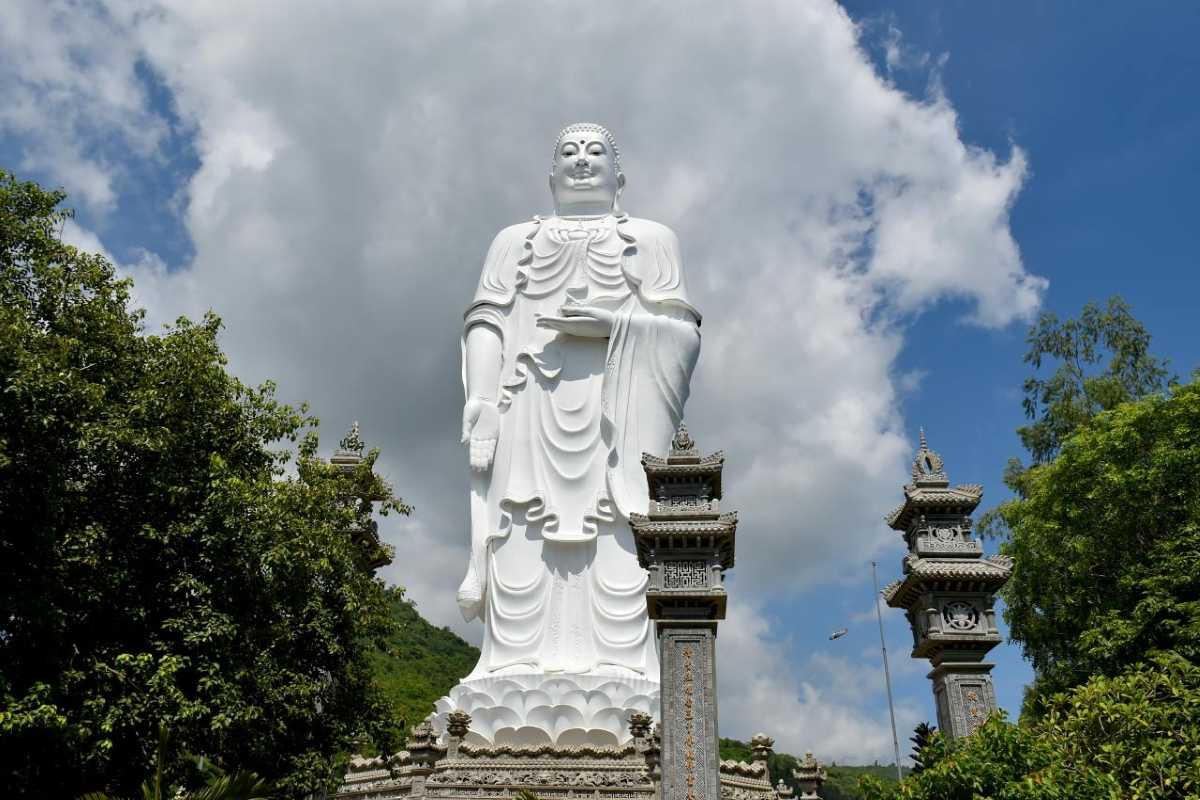
Role in Local History and Community
Beyond its spiritual functions, the pagoda has played a pivotal role in the cultural life of Dien Khanh District and surrounding areas. Its influence extends into social traditions and community identity.
Influence on surrounding communities
The pagoda acts as a hub for religious activities and cultural preservation that deeply affect nearby villages.
- Community festivals: Hosting traditional events and rituals.
- Social gatherings: A place for local engagement and support.
- Educational programs: Teaching Buddhist values and customs.
- Cultural preservation: Sustaining regional heritage and crafts.
This ongoing involvement strengthens ties between spiritual and social life.
Important historical events or figures associated with the pagoda
Key individuals and moments in the pagoda’s history highlight its significance in the region’s religious and cultural narrative.
- Founding monks: Visionaries who established the pagoda.
- Notable visitors: Buddhist leaders and cultural figures.
- Historical ceremonies: Events marking spiritual milestones.
- Restoration projects: Community efforts to maintain the site.
These historical aspects connect visitors to the living legacy of Tong Lam Lo Son Pagoda.
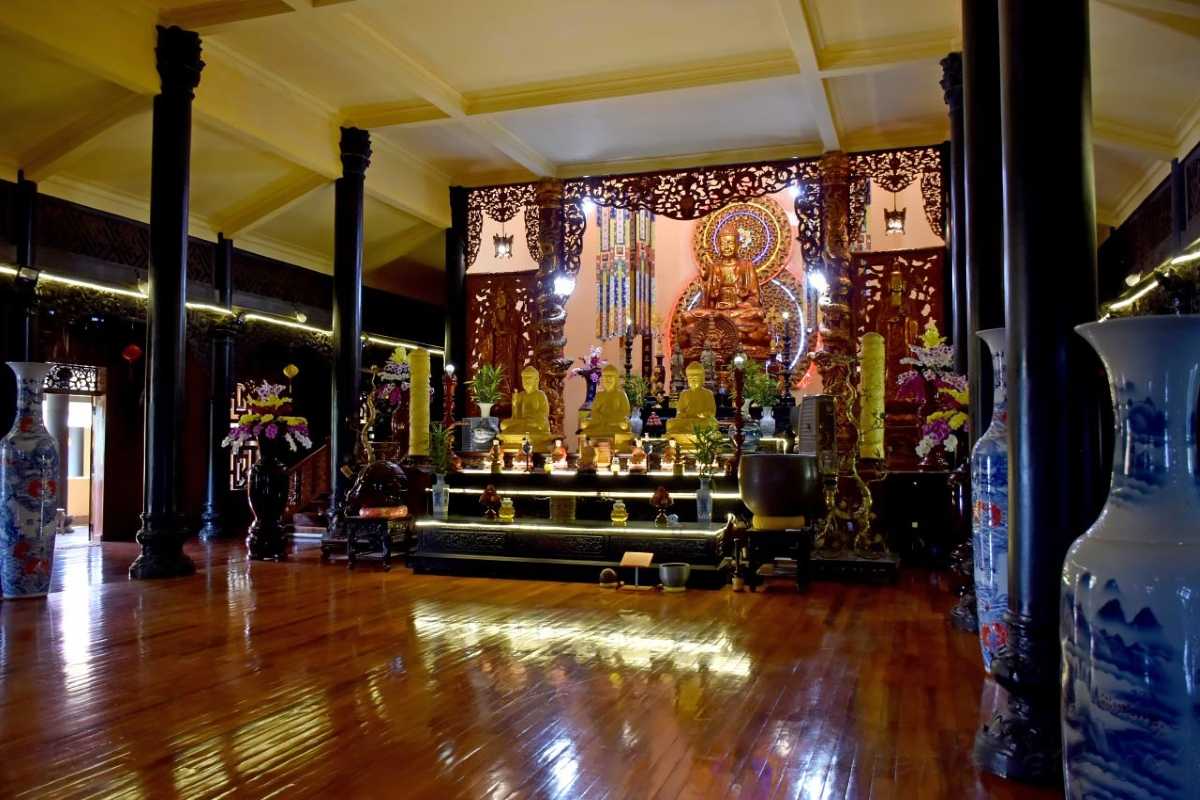
Cultural and Religious Importance
Tong Lam Lo Son Pagoda cultural importance is deeply embedded in Vietnamese Buddhist traditions and local spiritual life. This section highlights its vital role in religious practices, annual festivals, and cultural preservation efforts, helping you appreciate its significance in both the community and the broader Buddhist heritage. Discover how the pagoda serves as a living center of faith and culture.
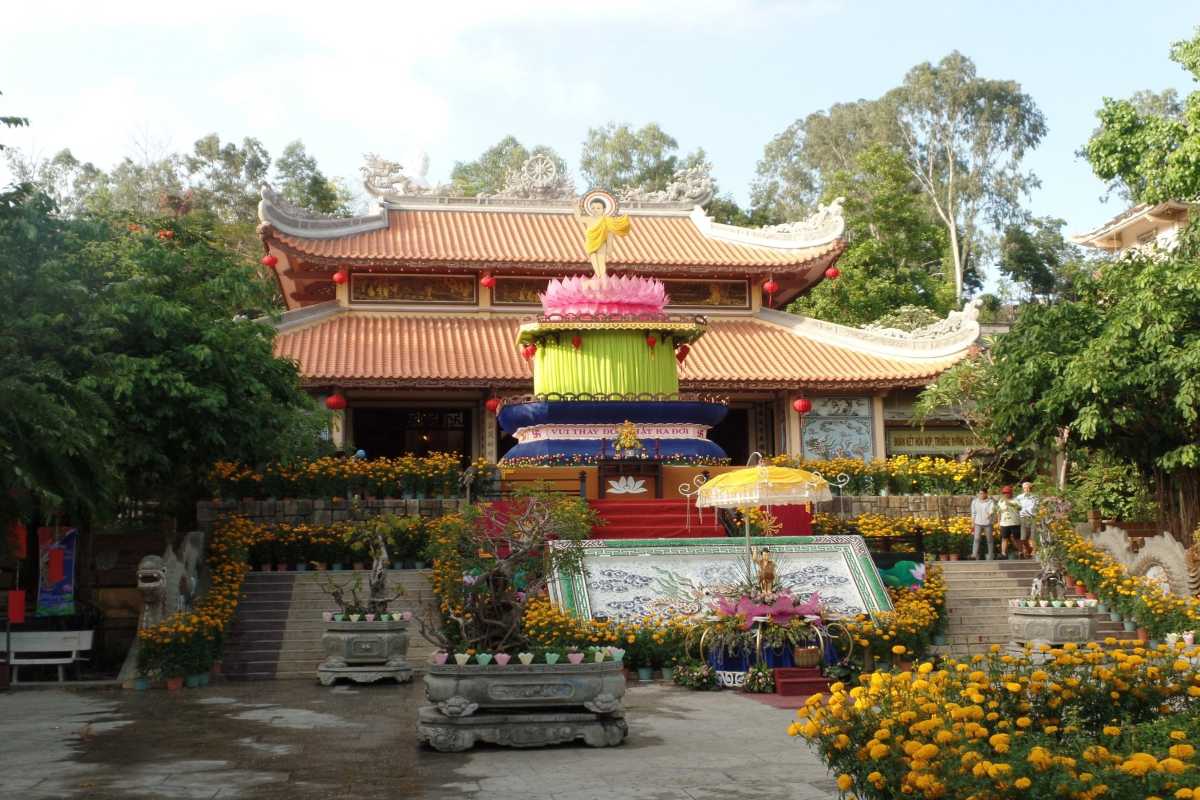
Buddhist Practices and Rituals at the Pagoda
The pagoda hosts a variety of Buddhist practices at Tong Lam Lo Son Pagoda that offer visitors a window into daily spiritual life. From meditation sessions to chanting rituals, these activities are essential to understanding the pagoda’s religious atmosphere and community engagement.
Daily worship and meditation sessions
Daily rituals at the pagoda create a structured spiritual rhythm that welcomes both locals and travelers interested in Buddhist meditation and worship.
- Morning and evening worship: Regular chanting and offerings to Buddha.
- Guided meditation: Sessions led by resident monks for visitors and practitioners.
- Silent retreats: Opportunities for deeper contemplation available on request.
- Open participation: Visitors can join or observe practices respectfully.
These sessions foster a peaceful and immersive spiritual experience during your visit.
Special ceremonies and chanting practices
Beyond daily routines, the pagoda holds special religious ceremonies that mark important Buddhist occasions and enhance its cultural richness.
- Ritual chanting: Performed on auspicious dates and festival days.
- Blessing ceremonies: For health, prosperity, and spiritual protection.
- Memorial services: Honoring ancestors and revered monks.
- Community involvement: Local participation in rituals strengthens bonds.
These ceremonies highlight the pagoda’s role as a vibrant center of Buddhist culture.

Festivals and Annual Events
Tong Lam Lo Son Pagoda hosts several key festivals that showcase Vietnamese Buddhist traditions and local customs. These events provide a festive atmosphere and an opportunity for visitors to engage with cultural celebrations.
Vesak Festival (Buddha’s Birthday) celebrations
The Vesak Festival is a major event celebrated with reverence and joy at the pagoda, marking the birth, enlightenment, and passing of Buddha.
- Lantern lighting: Symbolizing enlightenment and hope.
- Processions: Devotees carry offerings and prayers around the pagoda grounds.
- Dharma talks: Educational sessions on Buddhist teachings.
- Communal meals: Shared vegetarian food promoting compassion.
Participating in Vesak enriches your cultural understanding and spiritual connection.
Vu Lan Festival and other local cultural events
The Vu Lan Festival honors filial piety and is widely observed at Tong Lam Lo Son Pagoda, reflecting deep Vietnamese values and community spirit.
- Ancestor remembrance: Rituals to express gratitude and respect.
- Charity activities: Supporting the needy as part of Buddhist compassion.
- Cultural performances: Traditional music and dance accompanying ceremonies.
- Community gatherings: Strengthening social ties through shared observance.
These events reveal the pagoda’s vital role in sustaining cultural heritage.

Educational and Preservation Efforts
The pagoda is actively involved in educating the community and preserving Buddhist artifacts and traditions, ensuring the continuation of its cultural legacy.
Community engagement and youth education programs
Education initiatives focus on passing Buddhist values and cultural knowledge to younger generations and the wider community.
- Youth workshops: Teaching meditation, ethics, and Vietnamese culture.
- Cultural classes: Calligraphy, traditional music, and crafts instruction.
- Volunteer programs: Encouraging community service and participation.
- Intergenerational activities: Bridging cultural transmission across ages.
These programs nurture spiritual growth and cultural pride.
Conservation of religious artifacts and traditions
Efforts to protect both physical and intangible heritage at the pagoda preserve its historical and cultural integrity.
- Artifact restoration: Maintaining statues, scriptures, and temple décor.
- Ritual documentation: Recording traditional chants and ceremonies.
- Preservation policies: Guidelines for protecting sacred objects and spaces.
- Collaboration: Working with cultural organizations and local authorities.
Such conservation ensures that the pagoda remains a living monument for future generations.

Visiting Tong Lam Lo Son Pagoda
Planning your visit to Tong Lam Lo Son Pagoda requires understanding what to expect and how to prepare. This section offers practical guidance to help you experience the pagoda’s spiritual ambiance, available activities, and visitor conveniences with ease. Prepare to immerse yourself fully and respectfully in this serene cultural site.

What to Expect as a Visitor
When you visit Tong Lam Lo Son Pagoda, expect a tranquil environment enriched by spiritual practices and welcoming facilities. This section introduces you to the atmosphere and practical aspects that will shape your experience.
Atmosphere and spiritual ambiance
The pagoda exudes a peaceful and meditative ambiance that invites reflection and calm.
- Serene surroundings: Natural landscapes create a quiet retreat from city life.
- Spiritual sanctuary: Daily worship and chanting enhance the sacred atmosphere.
- Architectural harmony: Traditional stone structures blend with the environment.
- Visitor mindfulness: Encouraged to respect the tranquil setting.
This atmosphere helps visitors connect with the spiritual heart of Tong Lam Lo Son Pagoda.
Visitor facilities and amenities
Understanding visitor support services ensures your time at the pagoda is comfortable and convenient.
- Restrooms: Well-maintained facilities for guests.
- Parking: Spaces available for cars and motorbikes near the entrance.
- Seating areas: Designated spots for rest and quiet contemplation.
- Information points: Staff and signage to assist visitors.
These amenities support a smooth and pleasant visit to the pagoda.

Guided Tours and Activities
To deepen your experience, Tong Lam Lo Son Pagoda offers meditation workshops and cultural programs. This section details available tours and how you can participate.
Available meditation workshops and cultural programs
Visitors can join various workshops designed to enhance spiritual practice and cultural understanding.
- Meditation sessions: Guided practices led by resident monks.
- Cultural programs: Classes on Buddhist traditions and Vietnamese heritage.
- Spiritual retreats: Extended opportunities for focused meditation.
- Community events: Open participation in religious and cultural activities.
These offerings provide meaningful ways to engage beyond sightseeing.
Tour options and booking information
Knowing how to book tours and programs helps you plan a tailored visit.
- Local tour operators: Offer group and private tours including the pagoda.
- Online booking: Available through travel platforms and agency websites.
- Asia Travel Links: Provides assistance for customized itineraries and bookings.
- Advance reservations: Recommended during peak seasons and festivals.
Booking ahead ensures access to desired experiences at Tong Lam Lo Son Pagoda.

Practical Visiting Tips
To make your visit respectful and enjoyable, keep in mind important tips about timing, attire, and accessibility.
Best time and seasons to visit
Choosing the right time maximizes your experience considering weather and events.
- Dry season (January to August): Ideal for outdoor activities and travel.
- Festival periods: Vesak and Vu Lan Festivals offer unique cultural experiences.
- Avoid heavy rains (September to December): For easier travel and comfort.
- Early mornings: Quieter and more serene for meditation and worship.
Visiting during these times enhances spiritual and cultural immersion.
Dress code and respectful behavior guidelines
Respecting local customs enriches your visit and honors the pagoda’s sanctity.
- Modest clothing: Cover shoulders and knees to show respect.
- Remove shoes: Required before entering sacred areas.
- Silence and mindfulness: Maintain quiet to preserve the tranquil atmosphere.
- Photography etiquette: Ask permission before taking photos inside.
Adhering to these guidelines fosters a positive visitor experience.
Accessibility and mobility considerations
Information about accessibility helps visitors plan according to their needs.
- Terrain: Mostly flat with some stone pathways; moderate walking required.
- Facilities: Basic ramps and seating areas for rest.
- Assistance: Staff available to help visitors with mobility challenges.
- Transport: Parking close to entrances reduces walking distance.
Knowing these details helps all visitors navigate the site comfortably.

Surrounding Attractions and Activities
The area around Tong Lam Lo Son Pagoda offers diverse attractions and activities that enrich your travel experience in Khanh Hoa. This section introduces nearby historical sites, natural wonders, and authentic village experiences that complement your visit, helping you plan a fulfilling itinerary.

Nearby Historical and Natural Sites
Explore significant landmarks and natural beauty close to the pagoda, perfect for day trips and cultural discovery.
Dien Khanh Citadel
The Dien Khanh Citadel is an 18th-century fortress showcasing historic architecture and Vietnam’s rich past.
- 18th-century fort: One of the oldest military constructions in the region.
- Historic architecture: Features ancient walls and gates reflecting traditional design.
- Cultural tours: Guided visits explaining its role in Vietnamese history.
- Visitor facilities: On-site museum and information centers.
A visit to the citadel deepens your understanding of local heritage near the pagoda.
Ba Ho Waterfalls
Experience the natural beauty and adventure offered by Ba Ho Waterfalls, a popular outdoor destination nearby.
- Hiking trails: Scenic paths leading through tropical forests.
- Swimming spots: Natural pools beneath cascading waterfalls.
- Picnic areas: Ideal for relaxing amid nature.
- Wildlife sightings: Opportunities to observe local flora and fauna.
This natural attraction provides refreshing leisure after cultural exploration.

Local Village Experiences
Immerse yourself in authentic rural life with local homestays and cultural activities in Vinh Phuong.
Homestays and rural tourism in Vinh Phuong
Staying in local homestays allows visitors to experience traditional lifestyles and community hospitality.
- Rural accommodation: Simple, comfortable lodging with local families.
- Traditional food: Home-cooked Vietnamese meals using regional ingredients.
- Cultural workshops: Learn crafts, farming techniques, and customs.
- Community interaction: Engage directly with village residents.
These experiences offer meaningful insight into the area's living heritage.

Combining Visits with Nha Trang City Attractions
Maximize your trip by pairing the pagoda visit with iconic sites in nearby Nha Trang city.
Po Nagar Cham Towers and Long Son Pagoda
Both landmarks reflect Cham architecture and Buddhist traditions vital to the region’s identity.
- Po Nagar Cham Towers: Ancient Hindu temple complex with panoramic views.
- Long Son Pagoda: Famous for its large white Buddha statue and ornate design.
- Cultural significance: Important religious and historical sites.
- Accessibility: Conveniently located within Nha Trang city center.
Including these sites complements your spiritual and cultural journey.
Beach and city sightseeing options
Enjoy the vibrant coastal and urban attractions of Nha Trang alongside your pagoda visit.
- Beaches: Relax at popular sandy shores such as Tran Phu Beach.
- Seafood dining: Fresh local cuisine at seaside restaurants.
- City tours: Explore markets, cafes, and cultural landmarks.
- Nightlife: Experience evening entertainment and local music scenes.
These activities offer leisure and cultural flavor for a balanced itinerary.

Travel Planning and Logistics
Planning your visit to Tong Lam Lo Son Pagoda involves practical decisions on transportation, lodging, costs, and safety. This section offers clear guidance to help you organize your trip smoothly and confidently, ensuring you focus on enjoying the cultural and spiritual experience.

Transportation and Getting There
Understanding your travel options is essential to choose the most convenient way to reach the pagoda from Nha Trang and surrounding areas.
Options by car, taxi, motorbike, and public transport
Various transport modes offer different advantages depending on your preferences and budget.
- Car and Taxi: Direct and comfortable travel, ideal for groups or those seeking convenience.
- Motorbike Rental: Popular for independent travelers wanting flexibility and adventure.
- Public Bus: Economical choice connecting Nha Trang with rural communes.
- Private Transfers: Available through agencies for hassle-free, door-to-door service.
Choosing the best transport mode ensures a smooth arrival at the pagoda.

Accommodation Recommendations
Selecting lodging close to the pagoda or in nearby towns helps enhance your overall travel experience.
Hotels and guesthouses near Dien Khanh and Nha Trang
Several accommodation options suit different budgets and preferences near Dien Khanh and Nha Trang.
- Budget guesthouses: Affordable stays offering basic comforts.
- Mid-range hotels: Balanced options with added amenities.
- Homestays: Immersive local experiences with families in rural areas.
- Family-friendly resorts: Larger hotels with facilities for all ages.
Understanding these options helps you find the right place to rest after your visit.

Entry Fees and Donations
Being informed about costs ensures you are prepared to respect local customs and contribute appropriately.
Information on pagoda entrance and suggested donations
The pagoda welcomes visitors with a voluntary donation system supporting maintenance and community work.
- Entrance: Generally free, with occasional fees during special events.
- Suggested donations: Small contributions appreciated to support upkeep.
- Donation methods: On-site donation boxes or through community programs.
- Transparency: Funds used for conservation and community services.
Knowing these practices helps you contribute respectfully to the pagoda’s sustainability.

Safety and Travel Precautions
Ensuring your safety and well-being during your visit is crucial, especially when traveling in rural Vietnam.
Weather considerations and seasonal advice
Awareness of climate patterns helps you choose the best time for a comfortable trip.
- Dry season (January to August): Preferred for outdoor activities and travel ease.
- Rainy season (September to December): Can cause travel delays and slippery paths.
- Temperature ranges: Mild to warm, pack accordingly.
- Festival seasons: Expect larger crowds and special events.
Plan your visit with weather in mind for optimal comfort.
Health and safety tips for rural travel
Taking precautions safeguards your health and ensures an enjoyable experience.
- Vaccinations: Recommended for common tropical diseases.
- Hygiene: Carry hand sanitizer and bottled water.
- Emergency contacts: Keep local health facility information handy.
- Travel insurance: Advised for medical and trip coverage.
These tips help you stay safe and prepared during your visit.

Conclusion
Summarizing your journey through Tong Lam Lo Son Pagoda highlights its rich cultural, historical, and spiritual offerings. This section aims to leave you inspired and well-equipped to include the pagoda in your travel plans, reinforcing key takeaways and providing useful contacts for further exploration.

Summary of Key Highlights
Here is a recap of the essential points covered in this guide to help you remember what makes Tong Lam Lo Son Pagoda a must-visit destination.
- Cultural importance: A center of Vietnamese Zen Buddhism and community traditions.
- Architectural uniqueness: Traditional Vietnamese temple design and distinctive stone construction.
- Visitor experience: Serene spiritual ambiance and welcoming facilities.
- Nearby attractions: Historical sites and natural wonders complementing your visit.
- Practical info: Transportation options, accommodation, entry fees, and safety tips.
Remember these highlights as you plan your visit to this serene spiritual site.

Encouragement to Visit and Explore
Including Tong Lam Lo Son Pagoda in your itinerary offers a rare chance to engage deeply with Vietnamese Buddhist culture and peaceful natural settings.
- Immerse yourself in daily worship and meditation practices.
- Participate in vibrant festivals like Vesak and Vu Lan.
- Explore the surrounding cultural landmarks and rural villages.
- Experience warm hospitality and meaningful community interactions.
Plan your visit to Tong Lam Lo Son Pagoda to enrich your journey with spiritual insight and cultural discovery.

Additional Resources and Contact Information
For further assistance and detailed planning, use the following resources to connect with trusted services and get up-to-date information.
- Official pagoda contacts: On-site information desks for visitor inquiries.
- Asia Travel Links: Expert travel support and customized itinerary planning via website or email.
- Contact details: Email us at contact@asiatravellinks.com or reach out by WhatsApp at +84917506881.
- Online resources: Travel forums and official tourism websites for updates and tips.
These contacts ensure you have reliable support before and during your visit.
Mike Nguyen
Travel Advisor
Mobile: +84917506881 (whatsapp available)
Email: contact@asiatravellinks.com


